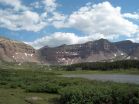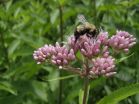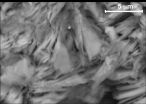UEA scientists separate medical benefits of cannabis from unwanted side effects
2015-07-09
(Press-News.org) Scientists at the University of East Anglia in collaboration with the University Pompeu Fabra in Barcelona have found a way to separate the medical benefits of cannabis from its unwanted side effects.
The research comes from the team that discovered how the main psychoactive ingredient in cannabis, known as THC, reduces tumour growth in cancer patients.
Their latest findings, published today in the journal PLOS Biology, reveal how the cognitive effects of THC are triggered by a pathway which is separate from some of its other effects.
That pathway involves both a cannabinoid receptor and a serotonin receptor. When it is blocked, THC can still exert several beneficial effects - including pain relief - while avoiding impairment of memory.
The research was carried out in mice, but it is hoped that the breakthrough will pave the way for safe cannabis-based therapies that do not cause alterations in mood, perception or memory.
Dr Peter McCormick, from UEA's school of Pharmacy, said: "THC, the major active component of marijuana, has broad medical use - including for pain relief, nausea and anxiety. Our previous research has also found that it could reduce tumour size in cancer patients. However it is also known to induce numerous undesirable side effects such as memory impairment, anxiety and dependence.
"There has been a great deal of medical interest in understanding the molecular mechanisms at work in THC, so that the beneficial effects can be harnessed without the side-effects.
"THC acts through a family of cell receptors called cannabinoid receptors. Our previous research revealed which of these receptors are responsible for the anti-tumour effects of THC. This new research demonstrates how some of the drug's beneficial effects can be separated from its unwanted side effects."
The research team carried out behavioural studies in mice and investigated how pathways in their brains operate under THC. They found that the absence of a particular serotonin receptor (5HT2AR) reduced some of the effects of THC - such as its amnesic effect, based on a standard memory test. But treatment to reduce 5HT2AR did not change other effects of THC, including pain relief.
"This research is important because it identifies a way to reduce some of what, in medical treatment, are usually thought of as THC's unwanted side effects, while maintaining several important benefits including pain reduction."
But Dr McCormick added that patients should not be tempted to self-medicate.
"Patients should not use cannabis to self-medicate, but I hope that our research will lead to a safe synthetic equivalent being available in the future."
INFORMATION:
'Cognitive impairment induced by delta9-tetrahydrocannabinol occurs through heteromers between cannabinoid CB1 and serotonin 5-HT2A receptors' is published in the journal PLOS Biology on Thursday, July 9, 2015.
ELSE PRESS RELEASES FROM THIS DATE:
2015-07-09
Neutralizing antibodies (Nabs) are immune proteins that recognize, bind to, and trigger the elimination of virus before it can establish a chronic infection. How to elicit a potent Nab response capable of protecting against different HIV subtypes and against different modes of infection is critical to the development of an AIDS vaccine. Two studies published on July 9th in PLOS Pathogens provide results on Nabs that could help guide vaccine design. One shows what type of Nab "repertoire" can be generated following superinfection, and the second one examines the efficacy ...
2015-07-09
SALT LAKE CITY, July 9, 2015 - More than a quarter of the rain and snow that falls on continents reaches the oceans as runoff. Now a new study helps show where the rest goes: two-thirds of the remaining water is released by plants, more than a quarter lands on leaves and evaporates and what's left evaporates from soil and from lakes, rivers and streams.
"The question is, when rain falls on the landscape, where does it go?" says University of Utah geochemist Gabe Bowen, senior author of the study published today in the journal Science. "The water on the continents sustains ...
2015-07-09
Global warming is putting the squeeze on bumblebees. In the most comprehensive study ever conducted of the impacts of climate change on critical pollinators, scientists have discovered that global warming is rapidly shrinking the area where these bees are found in both North America and Europe.
Researchers examined more than 420,000 historical and current records of many species of bumblebees--and confirm that bumblebees are in steep decline at a continental scale because of climate change. The new research is reported in the journal Science.
ECONOMIC THREATS
This ...
2015-07-09
The discovery of a fiber-reinforced, concrete-like rock formed in the depths of a dormant supervolcano could help explain the unusual ground swelling that led to the evacuation of an Italian port city and inspire durable building materials in the future, Stanford scientists say.
The "natural concrete" at the Campi Flegrei volcano is similar to Roman concrete, a legendary compound invented by the Romans and used to construct the Pantheon, the Coliseum, and ancient shipping ports throughout the Mediterranean.
"This implies the existence of a natural process in the subsurface ...
2015-07-09
Researchers from the University of Calgary and University of Ottawa have made an astonishing find when it comes to the habitat range of bumble bees, and the results are troubling.
Findings to be published in the Journal Science, demonstrate that climate change is having a significant impact on bumblebee species in North America and Europe.
Bumblebees are losing vital habitat in the southern regions of North America and Europe, which is cause for concern but another pressing issue is that bumblebee species generally haven't expanded north," explains Paul Galpern, Assistant ...
2015-07-09
TORONTO, July 9, 2015 - Bumblebees are rapidly declining in both North America and Europe, and a new study points to climate change as the major factor. The study, a comprehensive analysis of how climate change impacts these critical pollinators, was published in Science today.
The research shows that bumblebees are losing large amounts of the southern portion of their ranges, but unlike other species which are compensating by moving further north as the climate warms, bumblebees are not heading north. Their range areas are compressing with rapid warming and this is causing ...
2015-07-09
This news release is available in Japanese.
A suite of energy-saving traits, including underactive thyroid glands, allows giant panda bears to survive almost exclusively on bamboo, according to a new study. Yonggang Nie and colleagues report the first measurements of daily energy expenditure (DEE) in these bears, which do not have stomachs designed for such low-nutrient, high-cellulose plants. The researchers studied five captive pandas and three wild ones, discovering that the animal's DEE was just about 38% of the average for a terrestrial mammal with ...
2015-07-09
This news release is available in Japanese. How does the Campi Flegrei caldera, or subsurface rock, near Naples, Italy, withstand more uplift than other calderas without erupting? A new study shows that the caprock underlying this particular caldera closely resembles ancient Roman concrete -- and that the rock's microstructures, characterized by intertwining fibrous minerals, lead to its exceptionally high strength. The findings help to explain how the caldera has been able to withstand tremendous deformation, such as the large uplift episode that began in 1982 and raised ...
2015-07-09
This news release is available in Japanese.
While the geographic ranges of many animals are expanding northward in response to climate change, those of North American and European bumblebee species are shrinking, a new study shows. These insects are failing to migrate northward, the study reveals, and in their southern territories, their ranges are compressing -- with range losses up to 300 kilometers in both North America and Europe. The findings reveal the vulnerability of these pollinators, which play key roles in agriculture, to a warming world, hinting that they ...
2015-07-09
This news release is available in Japanese.
Researchers have designed a more efficient jumping robot with three-dimensional (3D) printing techniques and a combination of hard and soft materials. Inspired by designs in nature, such as snakes or insect larvae, soft-bodied robots are safer, more adaptable, and more resilient than their traditionally rigid counterparts, but molding and powering them has proved challenging. Now, Nicholas Bartlett and colleagues report a technique for designing and manufacturing untethered, frog-like jumping machines with ...
LAST 30 PRESS RELEASES:
[Press-News.org] UEA scientists separate medical benefits of cannabis from unwanted side effects





